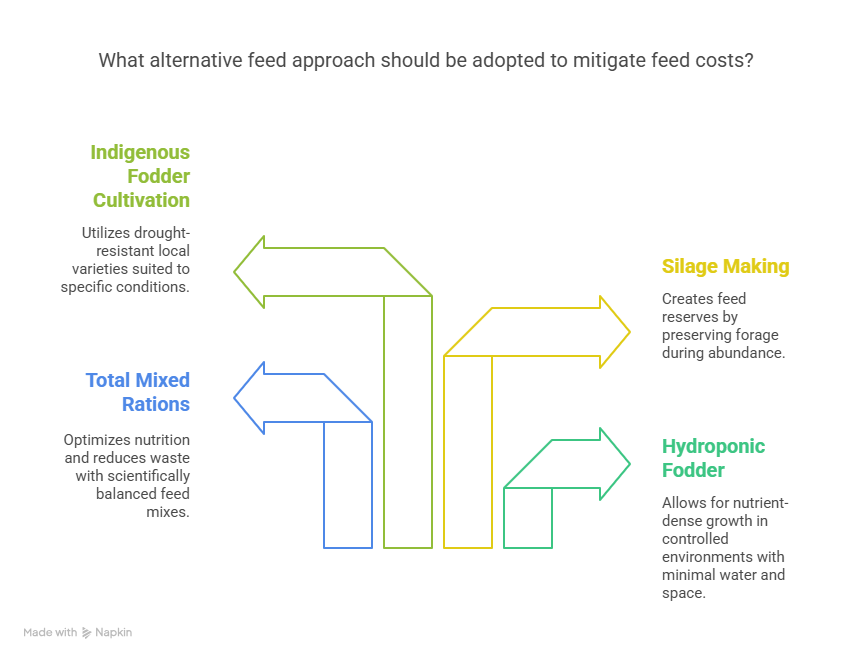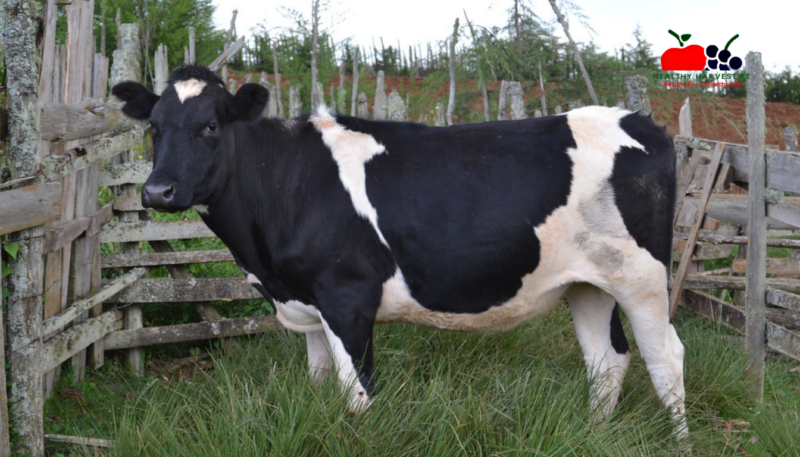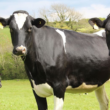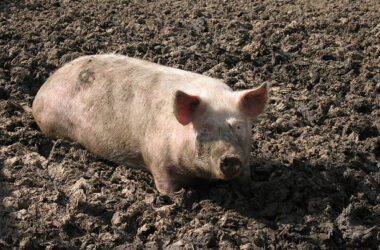Dairy farming in Kenya isn’t just another agricultural activity – it’s the backbone of rural economies and a critical component of the nation’s food security system. Whether you’re looking to dive into this industry or simply curious about its dynamics, understanding the current landscape is your first step toward making informed decisions.
Kenya rocks the second-largest dairy industry in Africa, but behind the impressive stats lies a complex reality of challenges and untapped potential. Let’s break down what’s really happening on the ground and explore the game-changing innovations reshaping the future of Kenyan dairy.
The Current State of Kenya’s Dairy Industry
Kenya’s dairy sector isn’t playing small games – it represents a solid 14% of the agricultural GDP and stands as one of East Africa’s most advanced dairy systems. The industry operates through a fascinating dual structure where tradition meets modernity.
The informal segment dominates with approximately 80% of all milk sold in the country, operating largely outside regulatory frameworks. Meanwhile, the formal sector handles collection, processing, and distribution through licensed channels under Kenya Dairy Board standards.
The geography matters enormously here. If you’re thinking about where the action happens, look to the highland zones of Central Kenya and the Rift Valley. These regions, benefiting from twice-yearly rain patterns and lush pastures, host about 90% of Kenya’s dairy cattle. Counties like Nyeri, Kiambu, Meru, and Nyandarua, along with parts of the Rift Valley including Nakuru, Uasin Gishu, and Nandi, form the powerhouse of Kenya’s formal dairy sector, collectively producing around 80% of all milk as of 2023.
The Cooperative Advantage
One of the most impressive aspects of Kenya’s dairy ecosystem is its network of 770 dairy cooperatives. These organizations aren’t just middlemen – they’re lifelines connecting small farmers to the broader market. They aggregate milk from individual producers before delivering it to processors while providing crucial support services like training, veterinary care, and credit access.
For small-scale farmers, who account for 56% of the national milk output, these cooperatives represent the difference between subsistence farming and commercial viability. While larger commercial entities and processors have gained prominence in recent years (signaling a gradual shift toward consolidation), small-scale production remains the backbone of the industry.
The Harsh Economic Reality Facing Dairy Farmers
Let’s cut to the chase – dairy farming in Kenya can be a loss-making venture. A recent study by the Kenya Dairy Board revealed that operations can face losses of up to 16%. That’s not just cutting into profits – it’s eating into farmers’ livelihoods.
Consider this eye-opening example: a micro-commercial farm with seven dairy cattle (four lactating) generated annual sales of Sh1.33 million (including Sh1.02 million from milk and Sh310,000 from livestock). Sounds promising, right? But here’s the kicker – total costs reached Sh1.54 million, resulting in a net loss of Sh210,918. That’s monthly losses of Sh17,576. Without livestock sales as supplementary income, annual losses would surge to Sh520,918.
The Feed Cost Crisis
The villain in this financial tragedy? Feed costs, which account for a staggering 84.8% of total farm operating expenses. Secondary villains include labor (6.2%) and breeding expenses (2.6%).
This economic pressure creates an existential threat to the industry. As noted in the Kenya Dairy Industry Sustainability Map 2023-2032: “If no action is taken, many farmers will abandon dairy farming. This will worsen the milk supply situation which is already constrained.” The ripple effects would impact the entire value chain and potentially increase Kenya’s reliance on imports, particularly from neighboring Uganda.
Production Challenges That Keep Farmers Up at Night
Beyond the balance sheet blues, production constraints pose serious hurdles. Kenya struggles to produce sufficient milk to meet domestic demand, primarily due to increasingly severe droughts devastating fodder production.
Farm-level productivity remains disappointingly low, with extended calving intervals further reducing potential yields. While some farmers strategically extend these intervals to limit feed consumption among lactating cows, in many cases, these extended intervals simply reflect inadequate management practices.
The combination of climate-related challenges and rising input costs creates a perfect storm threatening both individual farm viability and national self-sufficiency in dairy products.
How the Government is Stepping Up
The Kenyan government isn’t blind to these challenges. Through the New Kenya Cooperative Creameries (New KCC), a government-owned processor, it has implemented various support mechanisms.
During surplus production periods (particularly during rainy seasons), New KCC purchases excess milk and processes it into powder or UHT milk, creating a buffer for times of low production. This intervention helps maintain more consistent prices throughout the year – a crucial stabilizing force in a market prone to seasonal fluctuations.
Market Expansion and Price Guarantees
New KCC has also positioned itself as an export channel for dairy products, targeting regional markets in East Africa and the Middle East. This market expansion helps balance domestic supply and demand while providing farmers with broader market access.
In 2021, Kenya introduced the Guaranteed Minimum Returns scheme through the Dairy Industry Regulations, establishing fixed minimum prices for milk sold to aggregators (cooperatives) and for direct sales. This price floor aims to protect farmers from market volatility and ensure basic profitability.
Infrastructure Development
The government has invested in critical infrastructure to support the dairy value chain. Investments in cold chain facilities, including cooling plants and milk collection centers managed by New KCC, have improved milk preservation capabilities and reduced spoilage. These infrastructure improvements enhance overall market efficiency while helping more milk reach consumers.
Speaking during a visit to the New KCC milk processing plant in Nairobi in 2023, Deputy President Rigathi Gachagua announced plans to increase farm-gate prices to at least Sh60 per liter while doubling the industry’s contribution to GDP from four to eight percent. The government intends to expand New KCC’s processing capacity to over three million liters daily, potentially doubling current levels.
Gachagua emphasized New KCC’s role as a market stabilizer rather than a profit-driven entity: “New KCC is a government-owned entity, an organization that serves and supports dairy farmers and is not a profit-making entity… the State-owned entity is a player to cushion the farmers and the consumers against market forces like fluctuation of prices.”
Game-Changing Innovations Transforming the Industry
Despite current challenges, Kenya’s dairy industry appears poised for transformation through adoption of innovative practices and technologies. As environmental concerns intensify, sustainability has become increasingly central to the sector’s future development.
Zero-Grazing: Maximum Output, Minimum Footprint
Zero-grazing systems are gaining popularity among Kenyan dairy farmers seeking to maximize land use efficiency while minimizing environmental impact. These systems allow for more controlled feeding regimens, enable easier manure collection and utilization as fertilizer, and reduce pressure on grazing lands.
The benefits of zero-grazing extend beyond environmental considerations:
| Benefits of Zero-Grazing | Traditional Grazing |
|---|---|
| Controlled diet quality and quantity | Variable feed quality depending on available pasture |
| Higher milk yields per cow | Lower average yields |
| Better disease management | Higher disease exposure risk |
| Efficient use of limited land | Requires extensive land |
| Year-round production stability | Seasonal production fluctuations |
Biogas Technology: Turning Waste into Wealth
Biogas technology represents another promising innovation embraced by forward-thinking dairy operations. By converting cow dung into biogas, these systems provide renewable energy for farm operations while producing nutrient-rich slurry that can be applied as fertilizer, effectively closing the nutrient cycle on the farm.
For farmers struggling with high energy costs, biogas provides a dual benefit – reducing expenses while creating an additional income stream through the sale of excess energy or high-quality organic fertilizer.
Water and Waste Management: Sustainability as Strategy
Efficient water use has become a critical priority for sustainable dairy farming in Kenya, particularly in drought-prone regions. Daily sustainable practices increasingly include regular monitoring of water sources to ensure consistent access to clean water for livestock, along with rainwater harvesting systems that capture and store precipitation for use during dry periods.
Proper manure management is equally essential for environmental sustainability. Progressive operations have implemented regular cleaning protocols for animal housing to minimize waste buildup and associated odors, while also establishing composting systems that transform daily waste into valuable soil amendments.
Advancements in Animal Health and Nutrition
The nutritional frontier in Kenyan dairy farming is seeing remarkable innovation. The use of probiotics and prebiotics in cattle feed has become more widespread, supporting gut health, improving digestion and nutrient absorption, and ultimately enhancing milk yield and quality.
Veterinary care has also advanced significantly, with improved access to vaccines and diagnostic tools reducing disease incidence and associated productivity losses. These developments, combined with better breeding practices, hold considerable promise for boosting farm-level productivity.
The Feed Solution: Alternative Approaches
Given the crippling impact of feed costs, innovative farmers are turning to alternative approaches:
- Hydroponic fodder production: Growing nutrient-dense fodder in controlled environments using minimal water and space
- Total Mixed Rations (TMR): Scientifically balanced feed mixes that optimize nutrition and reduce waste
- Silage making: Preserving forage during abundance to create feed reserves for dry seasons
- Indigenous fodder cultivation: Growing drought-resistant local varieties that thrive in the specific agroecological conditions

Market Opportunities for the Forward-Thinking Farmer
Despite the challenges, Kenya’s dairy industry offers significant opportunities for those willing to innovate:
Value Addition: Beyond Raw Milk
The most successful dairy entrepreneurs in Kenya aren’t just selling raw milk – they’re creating value-added products that command premium prices:
- Yogurt and fermented milk products
- Cheese (both traditional and specialty varieties)
- Ghee and butter
- Flavored milk drinks
- Ice cream
These products not only fetch higher prices but also have longer shelf lives, reducing wastage and allowing for market expansion beyond immediate localities.
Direct-to-Consumer Models
Digital platforms are enabling innovative farmers to bypass traditional middlemen and connect directly with consumers. Mobile apps and social media marketplaces allow farmers to build brand recognition and develop loyal customer bases that value quality, consistency, and transparency.
The Future Outlook: Challenges and Opportunities
Kenya’s dairy sector stands at a crossroads, facing significant challenges while simultaneously embracing promising innovations that could transform its trajectory. The current economic pressures—particularly the prohibitive cost of feeds—threaten the viability of smallholder operations that form the backbone of the industry. Without intervention, these pressures could drive farmers from the sector, exacerbating existing supply constraints and increasing import dependency.
For Kenya’s dairy industry to realize its full potential, stakeholders across the value chain must collaborate in addressing current challenges while accelerating adoption of promising innovations. With appropriate support and strategic investment, the sector can enhance its contribution to national food security, rural livelihoods, and economic development while operating in environmentally sustainable ways.
Key Success Factors for Future Dairy Entrepreneurs
If you’re considering entering the dairy farming sector in Kenya, focus on these critical success factors:
- Feed efficiency: Develop cost-effective, locally sourced feeding strategies
- Value addition: Look beyond raw milk to higher-margin products
- Technology adoption: Embrace innovations in breeding, nutrition, and waste management
- Market connectivity: Build direct relationships with consumers where possible
- Cooperative membership: Leverage the benefits of collective bargaining and shared services
Conclusion: Making the Most of Kenya’s Dairy Potential
Kenya’s dairy industry offers tremendous potential for those who approach it strategically. The challenges are real – from feed costs to climate variability – but so are the opportunities. By embracing innovative practices, leveraging government support systems, and focusing on efficiency and value addition, dairy farming in Kenya can transform from a struggling sector to a thriving industry.
Whether you’re a current farmer looking to improve operations or a potential investor exploring opportunities, the key lies in balancing tradition with innovation, understanding market dynamics, and implementing sustainable practices that benefit both your bottom line and the environment.
The future of dairy farming in Kenya isn’t about doing more of the same – it’s about doing things differently. Those who recognize this shift will be positioned not just to survive but to thrive in this evolving landscape.
What innovative approaches have you seen in Kenya’s dairy sector? Share your experiences in the comments below!










